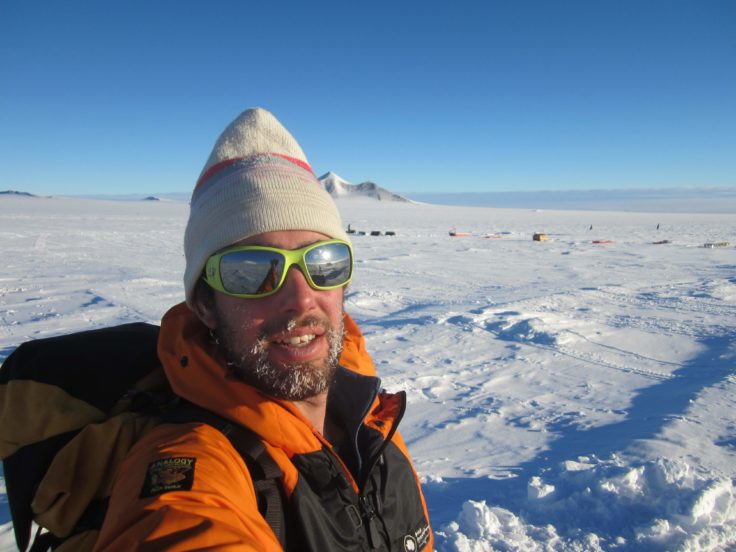ANTARCTIC BLOG: Extreme Geology #5
5 January, 2016 Marie byrd Land
Greetings from Marie Byrd Land! The waiting is over….we finally arrived at our field site on 11th December, after a 4 hour flight from Sky Blu one of BAS’s fuel depots that is itself 4 hours flying time from Rothera – yes, we are in a very remote spot down here!
We started out camping at a scenic site close to Mount Murphy, with a fantastic view of a huge volcano 70 km to the south, called Mount Takahe. Unfortunately the weather there was rather mixed, and after only a couple of days where we could get out and about, our camp became shrouded in mist for 5 days….so when that cleared, we grabbed an opportunity to move our camp closer to some of our higher priority work sites. This turned out to be a good move. Since then we’ve had plenty of sunshine and unexpectedly warm temperatures (above -10 degrees C every day). We have all enjoyed seeing the beautiful mountains here bathed in sunshine.
Day to day, we spend a lot of time talking about the weather, because it dictates so much of the work (and recreation) we can do here. Some days are frustrating – for example, those with lovely sunshine that are unworkable because the wind is so strong that it is difficult to stand up – and others are unexpectedly pleasurable. For example, we visited a site nearer the sea last week, and we were pretty much working in T-shirts. We need to be very flexible with clothing right now, as some days I have been wearing 7 layers one minute and a sunhat the next (or all that together)!

I love the changing weather, and experiencing the bad days helps me to appreciate the good ones even more. As project leader, I am most concerned with the weather from a planning perspective: thinking ahead so that, as a team, we achieve as much as we can in the time available.
Our field guides, on the other hand, are primarily responsible for keeping us all safe, so naturally their thoughts turn often to the weather and how to live safely in this extreme and ever-changing environment. One of them, Al Docherty, gives his perspective:
“Fieldwork in Antarctica is often viewed with glamorous connotations. Scientists and field guides scaling sunkissed mountains, questing for a higher knowledge. Sometimes this is bang on, however, the reality is that weather rules. On poor weather days, you become ensconced in “tent life”. In this world, you spend all day in your bed (sitting or lying – there are no chairs). Food is stashed next to your bed and the stove to cook it is in easy reach. Entertainment in the form of books, music, and games are also accessible stored in pockets inside our tent. We have affectionately called our home the “techno tent” because it contains many electronic gadgets that we power using solar panels, in contrast to our colleagues’ tent which has few of these but more traditional pastimes like paperback books and magazines (no Kindles to be seen!).
The equivalent of walking down the hall to the bathroom is to put on several layers of clothes, covering up all exposed skin, and enter the maelstrom that starts a foot from your bed (i.e. outside). Repeat this for a few days and then you get the picture. Keep an eye out though because as soon as that good weather window comes, it’s all hands on deck until the next – and inevitable – bad weather rolls in.”
In November 2015 geologist Joanne Johnson and 3 colleagues set off to work at one of the most remote parts of Antarctica to find out what’s causing the changes to the West Antarctic Ice Sheet.